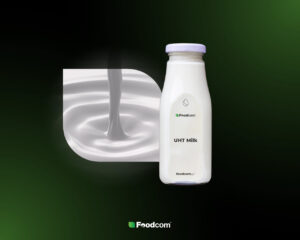Lesen Sie unseren Bericht über den indischen Milchmarkt. Werfen Sie einen Blick auf die Prognosen für verschiedene Milchprodukte im Jahr 2021 und vergleichen Sie sie mit der vorherigen Saison. Entdecken Sie die wichtigsten Käufer indischer Milchprodukte und die Initiativen zur Ausweitung des Exportmarktes. Lesen Sie auch über die Zukunft des indischen Milchsektors und die bevorstehenden Herausforderungen.
Produktion
Im Jahr 2021 soll die Kuhmilchproduktion in Indien 96 Millionen Tonnen erreichen – im Vergleich zu 93,8 Millionen Tonnen im Vorjahr. Das Land soll mit einem Anteil von 17,7% an der globalen Produktion im Jahr 2021 als drittgrößter Produzent von Kuhmilch eingestuft werden. Der Anteil Indiens an Kühen in Milch soll 58 Millionen betragen – ein Anstieg um 2,7% gegenüber dem Vorjahr und gleich 41,8% des globalen Bestands. Daten zeigen, dass die Milchausbeute pro Kuh in Indien viel niedriger ist als in anderen Ländern. Die geschätzte Menge anderer Milchprodukte in Indien beträgt 101 Millionen Tonnen, ein Anstieg um 2% gegenüber dem Vorjahr, und hat einen Anteil von 91,6% am weltweiten Markt.
Im Jahr 2021 soll die Produktion von Butter gegenüber dem Vorjahr um 3,3% auf 6,30 Millionen Tonnen steigen. Indische Butter wird fast ausschließlich auf dem heimischen Markt konsumiert. Die Produktion von Magermilchpulver (SMP) in Indien wird voraussichtlich um 3% gegenüber dem Vorjahr wachsen und etwa 680.000 Tonnen betragen, was 13,5% der weltweiten Produktion entspricht.
Internationaler Handel
Zu den Hauptkäufern indischer Milchprodukte gehören die Vereinigten Arabischen Emirate, Bangladesch, die USA, Bhutan, Singapur und Saudi-Arabien. In den letzten Jahren hat Indien aktiv die Entwicklung seines Milchexportsektors durch verschiedene staatliche Initiativen vorangetrieben. Während der Pandemie war eines der Hauptprobleme für Milchproduzenten der drastisch gestiegene Frachttransport, der sich innerhalb eines Jahres verdreifacht hat. Kürzlich wurde ein überarbeitetes Hilfsprogramm angekündigt, das Milchproduzenten beim Versand ihrer Produkte unterstützen wird. Die Hersteller erhalten finanzielle Unterstützung zur Deckung der Frachtkosten – die Regierung wird 50% dieser Kosten übernehmen, wenn Milchprodukte von Indien auf dem Seeweg exportiert werden. Das Programm wird bis März 2022 in Kraft sein und soll den indischen Milchsektor erheblich verbessern. Darüber hinaus sind sich Indien und die USA einig über die Notwendigkeit, eine klare Handelsarchitektur zwischen ihnen zu schaffen, und werden voraussichtlich in naher Zukunft geeignete Abkommen suchen. Die USA haben ein gesteigertes Interesse an indischen Agrarprodukten, einschließlich Milchprodukten, bekundet.
Export
In der ersten Hälfte des Jahres 2021 hat Indien seine Butterlieferungen in die USA gegenüber dem gleichen Zeitraum des Vorjahres um über 36% reduziert. Dennoch belegte das Land mit 4.538 Tonnen des Produkts immer noch den zweiten Platz unter den Lieferanten von Butter in die USA. Gleichzeitig stiegen die Joghurtlieferungen aus Indien in die USA um über 21% auf insgesamt 135 Tonnen, während die Lieferungen von Vollmilchpulver (WMP) um über 96% auf 7 Tonnen zurückgingen. Die indische Regierung strebt auch Handelsabkommen mit Australien, Kanada und dem Vereinigten Königreich an. Trotz eines fast 44%igen Rückgangs der Butterlieferungen nach Australien ist Indien immer noch der wichtigste Lieferant des Produkts für das Land.
Import
In Bezug auf Importe hat Indien im Jahr 2021 Milchprodukte im Wert von 12,40 Millionen US-Dollar importiert, verglichen mit 11,34 Millionen US-Dollar im Vorjahr. Die Zahlen sind jedoch im Vergleich zu den Importen von Milchprodukten in den Vorjahren viel nied








